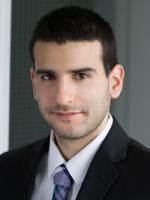In Mayo Collaborative Servs. v. Prometheus Labs., Inc., 566 U.S. 66, 71 (2012), and Alice Corp. Pty. Ltd. v. CLS Bank Int’l, 134 S. Ct. 2347 (2014), the Supreme Court of the United States established a two part test for determining patent subject matter eligibility. While most practitioners tend to focus on the second part of the test, for most software-related patents, focusing on the first part of the test may ultimately be a better strategy for patent drafting and during prosecution before the United States Patent and Trademark Office (“USPTO”).
Part I of the Mayo/Alice test requires an evaluation of whether the claims of a patent application are directed to a law of nature, a natural phenomena, or an abstract idea. Part I of the Mayo/Alice test is referred to as step 2A by the USPTO (See MPEP §2106). If the application is found to be directed to a law of nature, natural phenomena, or abstract idea, Part II of the Mayo/Alice test then requires a determination of whether any element, or combination of elements, in the claim is sufficient to ensure that the claim as a whole amounts to significantly more than the judicial exception. Part II of the Mayo/Alice test is referred to as step 2B by the USPTO (See MPEP §2106).
For software-related claims that have been deemed abstract by Examiners at the USPTO, the natural inclination of most practitioners is to either concede or fail to argue under Part I of the Mayo/Alice test, and then proceed to contend that nevertheless the claims as a whole amount to significantly more than a judicial exception under Part II of the Mayo/Alice test. From my experience prosecuting software-related applications in the USPTO, Examiners tend to be equal part offenders in this matter and often give short shrift to Part I of the Mayo/Alice test themselves. Many Examiners simply conclude that software-related claims are abstract and ask that the Applicant present an explanation for why the claims as a whole amount to significantly more than the judicial exception under Part II of the Mayo/Alice test.
Focusing on Part I of the Mayo/Alice test, however, may prove to be a more effective strategy when prosecuting software-related applications in the USPTO. As described in MPEP §2106.04(a)(I), a claim directed to an improvement in computer-related technology or to the functioning of the computer itself is not abstract. Therefore, if a software-related claim is rejected as abstract under Part I of the Mayo/Alice test, it is advisable, when possible, to counter the rejection by arguing that the claim is not abstract because it is directed to an improvement in computer-related technology or to the functioning of the computer itself. In fact, several significant decisions by the United States Court for Appeals for the Federal Circuit finding software-related claims patent eligible have focused on Part I of the Mayo/Alice test rather than Part II (See Enfish, LLC v. Microsoft Corp., 822 F.3d 1327, 1336-37 (Fed. Cir. 2016); McRO, Inc. v. Bandai Namco Games Am. Inc., 837 F.3d 1299, 1315 (Fed. Cir. 2016)).
The Patent Trial and Appeals Board has recently issued a decision that further illustrates the importance of Part I of the Mayo/Alice test. Specifically, the Board issued a decision regarding a software-related patent application, in which it reversed the Examiner’s interpretation that the independent claim was directed to an abstract idea. The underlying claim was to a method for “selecting, with a computer, a subset of measured data as an approximation in a computer implemented iterative geophysical data inversion,” “executing, with the computer, a first cycle of the iterative geophysical data inversion that uses the subset of measured data as the approximation,” and “varying, with the computer, the subset of measured data that is selected for processing in the iterative geophysical data inversion … wherein the varying reduces the artifact in a final subsurface model produced by the iterative geophysical data invention relative to the intermediate subsurface model” (See U.S. Patent Pub. No. 2014/0379315 A1). In reversing the Examiner’s interpretation, the Board relied exclusively on Part I of the Mayo/Alice test, without even addressing Part II of the test (See Ex parte Krebs et al., Appeal 2017-006095 (PTAB Feb. 15, 2018)).
When facing a subject matter eligibility rejection, it is important to argue that software-related claims are not directed to an abstract idea under Part I of the Mayo/Alice test, rather than simply conceding or failing to argue this point. Given that many software-related claims are directed to improvements in computer-related technology, or to the functioning of the computer itself, arguing under Part I of the Mayo/Alice test is an important tool for practitioners. In addition to keeping Part I of the Mayo/Alice test in mind when prosecuting an application before the USPTO, it is just as important to keep Part I of the Mayo/Alice test in mind when drafting software-related applications. Practitioners drafting software-related applications should always be sure to explain how the features recited in the claims provide an improvement to computer-related technology, or to the functioning of the computer itself.




 />i
/>i
